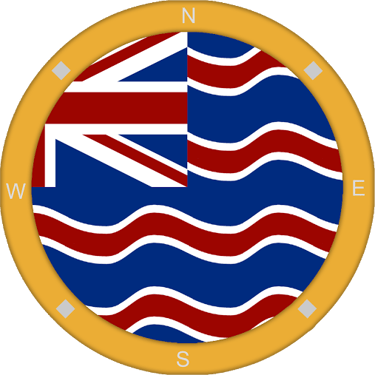Mutiny on the Bounty, a Cornish affair?
There is one historic link between Cornwall and Pitcairn that stands out for its dramatic events and storied retelling through the generations. This is of course, The Mutiny on the Bounty.
NEWS FROM THE OVERSEAS TERRITORIESRESEARCHPITCAIRN ISLANDS
The 5th March is St Piran’s Day – celebrated annually as the national day of Cornwall. The day is marked by all manner of festivities, such as concerts and parades, with some events being conducted bilingually in English and Cornish (Kernewek). St Piran’s Day celebrations are not geographically restricted to Cornwall, as Cornish communities in London, the United States and beyond also hold events to celebrate their cultural and national identity.
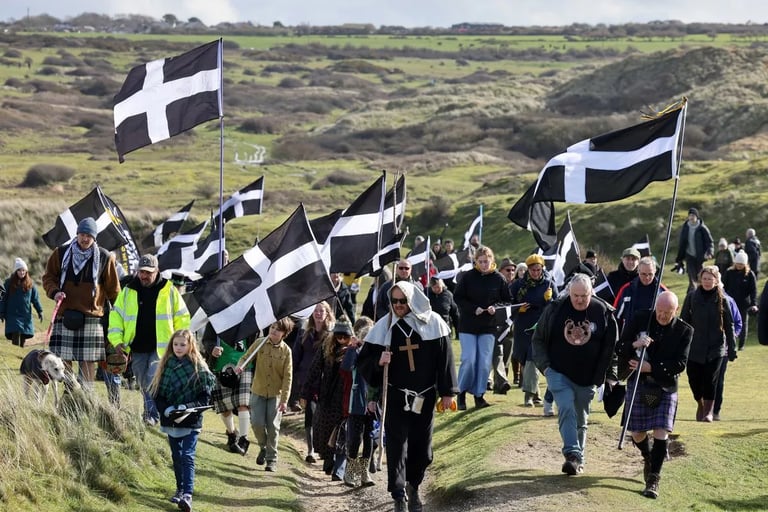

The annual march across Perran Sands, one of the earliest Christian sites in Britain
Cornwall, with its long maritime tradition and history of emigration, boasts uniquely global connections. Many Cornishmen sought a better life abroad during downturns in the turbulent mining industry, creating distinctly Cornish communities across the “New World”. Today there are significant populations of the Cornish diaspora in former mining hubs such as South Australia, the United States and Mexico.
The British Overseas Territories also share links to Cornwall. Some of these connections are historic such as the claim that Cornishman Bawden/Bodden was the first person to settle the Cayman Islands in the 17th century. Other links take us to the modern day, with the 2023 appointment of Cornishwoman Birdie Martin-West as “Base-leader” of Port Lockroy, in the British Antarctic Territory.
However, there is one historic link between Cornwall and Pitcairn that stands out for its dramatic events and storied retelling through the generations.
This is of course, The Mutiny on the Bounty.
HMS Bounty departed Deptford in October 1787 with a mission to transport breadfruit plants from Tahiti to British territories in the West Indies. The man given the honour to command the vessel was Lieutenant William Bligh.
Lieutenant Bligh represents the first Cornish link in the story. Though he is generally stated as having been born in Plymouth in 1754, some claim that he was in fact born in St Tudy, in North Cornwall. While it cannot be confirmed that Bligh was born within the Duchy’s borders, we can be certain that he was of Cornish descent. William Bligh’s great grandfather was John Bligh of Tinten Manor, St Tudy. William’s grandfather, Richard Bligh was born in St Tudy and William himself is quoted as having described himself as “a native of St Tudy”. This could be in reference to being born in the village, or more likely, that he recognised his Cornish ancestry. Despite this, the Cornish hardly gave him a warm welcome during his assignment to inspect Cornish river defences. Local constables mistook Bligh’s interest in the military infrastructure as subterfuge and arrested him as a spy. The matter was not resolved before he was brought before a local Justice of the Peace.
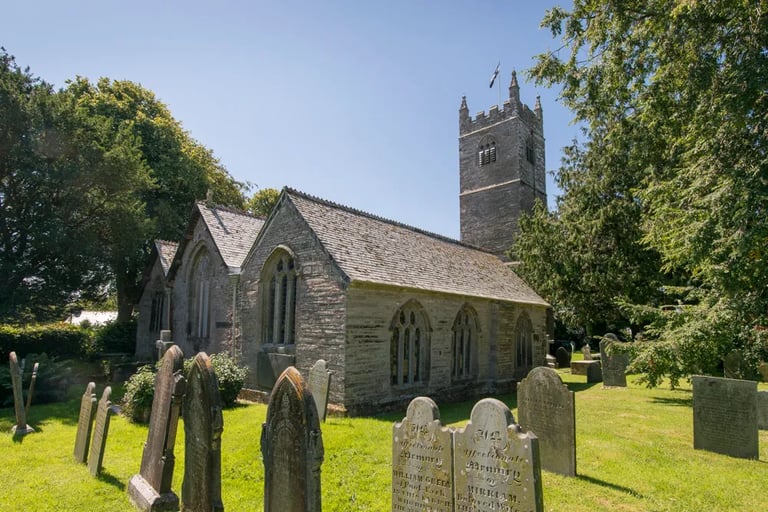

The Parish Church in St Tudy, the home village of the Bligh family
Bligh was a renowned mariner, who had previously sailed with Captain James Cook. The Lieutenant was tasked with using the long voyage to chart and navigate poorly explored sea-routes.
Bligh was a stern and strict leader, wishing to gain the best from his crew. He administered a regimented routine, based on what he had learned from serving under Cook. Despite his leadership style, Bligh was hopeful that there would be no need to enforce physical punishments during the voyage. His reports during the early stages of the expedition reflected that the crew’s spirits were high with no problematic behaviour.
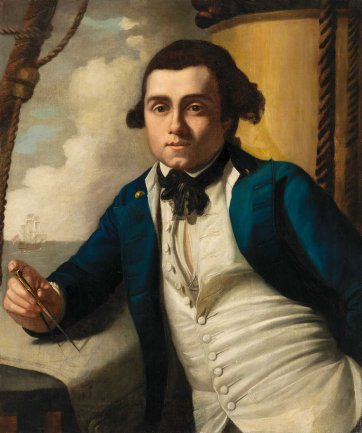

Lieutenant William Bligh
Cracks began to show however, when Lieutenant Bligh promoted Fletcher Chrisitan to acting Lieutenant, allowing Fletcher to supersede the ship’s original second in command – Sailing Master John Fryer. Fletcher Christian would eventually go on to betray Bligh and instigate mutiny. Fryer’s relationship with Bligh deteriorated following Christain’s promotion and one week later at Fryer’s behest, the Bounty’s first flogging took place.
The victim of this punishment was Able Seaman Matthew Quintrell (misspelt Quintal in Bounty’s records). Matthew Quintrell represents the second Cornish link to the mutiny. Matthew came from Padstow on the North Cornish coast. Following a troubled childhood, including the loss of his mother at age 7 and abortive attempts by his father to have other relatives take him in, Matthew joined the Royal Navy alongside his brothers. Quintrell had previously served on HMS Nymph from 5th December 1782 until the ship mysteriously caught fire on 28th June 1783. Three men died in the blaze and the ship sank off the coast of Tortola, in the British Virgin Islands. Matthew’s flogging was in response to “insolence and mutinous behaviour”, symbolic of the crew’s deteriorating morale due to bad weather, setbacks and Lieutenant Bligh’s harsh regime.
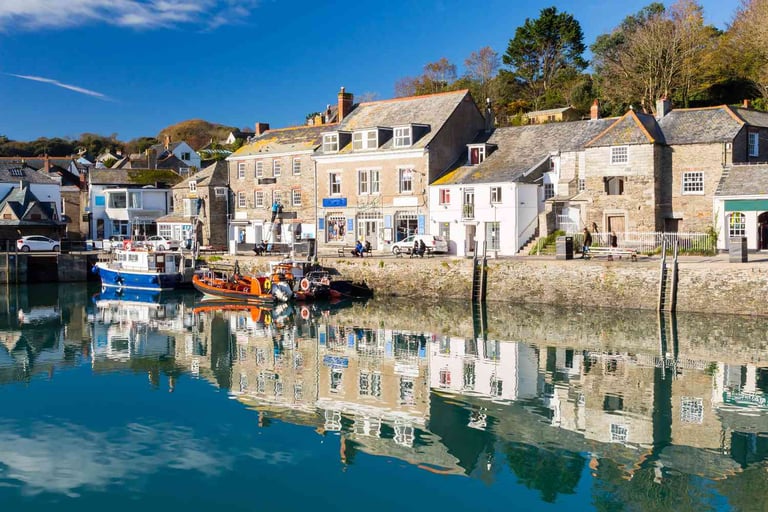

The harbour in Padstow, Matthew Quintrell's hometown
Once HMS Bounty finally reached Tahiti in October 1788, the crew remained on the island for 5 months, gathering the important breadfruit plants and engaging with the local population. When the time came to set sail for the Caribbean the crew was resistant, many of them having formed relationships with local women and unwilling to return to the cramped conditions on HMS Bounty. 3 men deserted, only to be captured and forced back onboard the ship followed by additional floggings on Bligh’s orders.
After The Bounty departed Tahiti on 5th April 1789 Bligh’s position became increasingly tenuous. Following a near miss with hostile islanders in modern day Tonga, Fletcher Christian was at his wits end. When brooding his upcoming mutiny, the first man he sought support from was Matthew Quintrell. Matthew initially refused, only to change his mind and agree the next day, agreeing to support Fletcher’s plot to capture the ship. It is fitting that the first victim of Bligh’s flogging would become the first crewman to join the nascent mutiny.
In the early hours of 28th April 1789, the mutiny was sprung, seeing Cornishman against Cornishman. Fletcher used his authority to rapidly take control of the ship and quickly gain access to the ship’s weapons. Once muskets were distributed to his followers, the fate of the Bounty was essentially sealed. The mutineers, including Quintrell, stormed Bligh’s cabin and tied the commander’s hands. As Bligh shouted for help, John Fryer came out of his cabin to briefly witness the commotion, before being forced back inside at gunpoint.
Despite roughly half the crew remaining loyal to Lieutenant Bligh, there was little they could do once the mutineers had armed themselves. An open boat was launched, in which Bligh and 18 loyalists would make the incredible journey to the Dutch East Indies, thousands of miles to the West. Bligh successfully brought the boat to safety in Timor on 14 June 1789, with minimal navigational equipment and only four cutlasses between them for defence. Bligh’s success in reaching the Dutch East Indies is a testament to his skills as a navigator and it is even more impressive that all bar one of Bligh’s loyalists survived the voyage. From the Dutch East Indies, William Bligh made his way back to Britian, where he was welcomed as a hero.
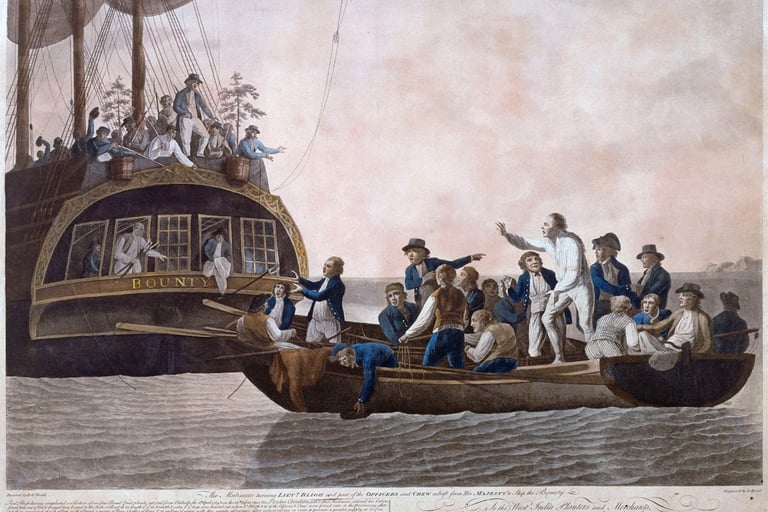

The mutineers sail away with HMS Bounty
After two stops at Tahiti and an abortive attempt to settle on the inhabited island of Tubai, a core group of 9 mutineers arrived at Pitcairn in 1790, with others having decided to settle on Tahiti. Matthew Quintrell was among those who settled on Pitcairn, in the hope that it was sufficiently remote that the mutineers could avoid any reprisals from the Royal Navy. It is our Cornishman, Matthew Quintrell who would go on to set fire to and destroy HMS Bounty on 23rd January 1790. Accounts differ over the circumstances that led Quintrell to this radical action. He may have been ordered to destroy the ship to avoid detection or he may have acted without permission, destroying valuable supplies and equipment in the process. Pitcairn’s early history was a terribly violent affair. The mutineers brought a number of men and women from Tahiti to Pitcairn, likely against their will. The poor treatment of the Tahitians caused the men to rebel in September 1793, murdering most of the mutineers. Quintrell, along with several others managed to avoid death by hiding in the hills. Overtime, the Tahitian men that initiated the killings, were themselves murdered.
Sadly, this was not to be the end of the troubles for the early community on Pitcairn. William McCoy, a Scotsman, discovered how to distil alcohol from a native plant. Quintrell soon joined McCoy in overindulgence and it was said that the two men were in a near permanent drunken state. The two troubled Celts disturbed the otherwise peaceful life on the island with Matthew going so far as to bite off his wife’s ear. After the death of McCoy, Matthew Quintrell’s behaviour became increasingly unpredictable. When his wife, Sarah, fell from a cliff to her death while collecting bird eggs, Matthew demanded a replacement. He took Susannah the wife of one of the other surviving mutineers, Edward Young. Young had long been afflicted by illness and was too weak to meaningfully object. By this time Quintrell was one of only three remaining mutineers on the island the others being Edward Young and John Adams.
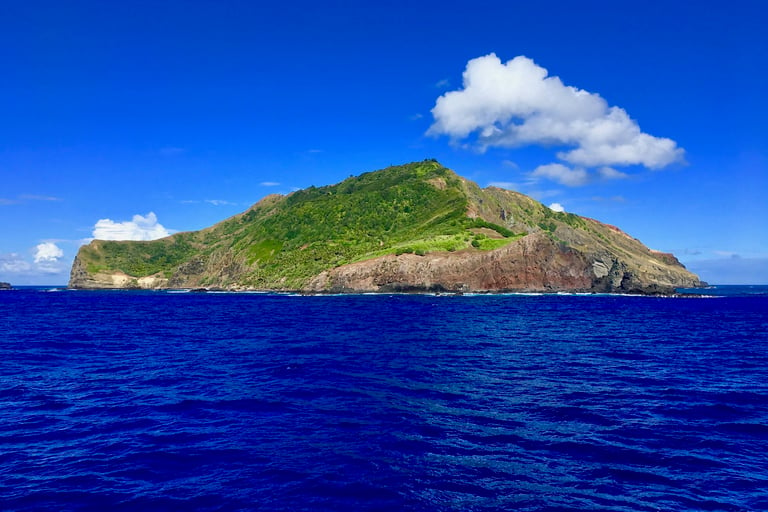

Pitcairn Island remains home to descendants of the mutineers
Matthew continued to threaten the peace, demanding more women and threatening to harm Fletcher Christian’s children and the two surviving Englishmen. This was a step too far. In 1799 Edward Youngs and John Adams invited Quintrell to Adam ‘s home, where the two men overpowered Quintrell, killing him with an axe from HMS Bounty. Matthew was 33 years old when he was murdered.
It is hard to find pity for Matthew Quintrell’s gruesome end, given his reprehensible behaviour and it is worth noting that life on Pitcairn became much more stable after his demise. Nonetheless, Quintrell’s legacy is not all negative. He was survived by five children, whose descendants can be found living on Norfolk Island to this day. The most notable of Quintrell’s descendants was the swimmer, Malcolm Champion, who won New Zealand’s first ever Olympic Gold medal at the 1912 Stockholm Games.
William Bligh’s role in the Mutiny is a little more complicated. Though he was hailed as a hero upon returning to Britian, it is hard not to portion at least some blame on him for the events that led to the mutiny. The fact that he went on to suffer another mutiny in 1808 during his time as Governor of New South Wales, suggests that his harsh and precise method of leadership gained little love from his subordinates. Though Cornwall may be less eager to claim Bligh as a role-model in leadership, he is certainly a symbol of the Duchy’s maritime heritage.
It is remarkable that two Cornishman played such a major role in the early history of Pitcairn. The Cornish have long been eager to claim Bligh as one of their own, though perhaps less keen on acknowledging Quintrell. It is important to recognise the connection and role played by both men on opposing sides of the mutiny. Bligh and Quintrell were complicated characters, and their actions are a reminder of the sometime morally ambiguous nature of our history.
I would like to wish everyone in Cornwall and beyond Gool Peran Lowen (Happy St Piran’s Day) this 5th March.


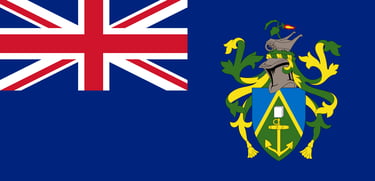

St Piran's flag, the flag of Cornwall
The flag of the Pitcairn Islands
